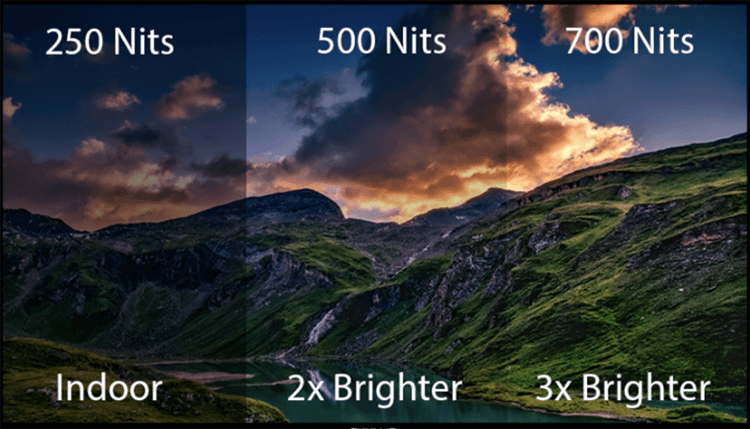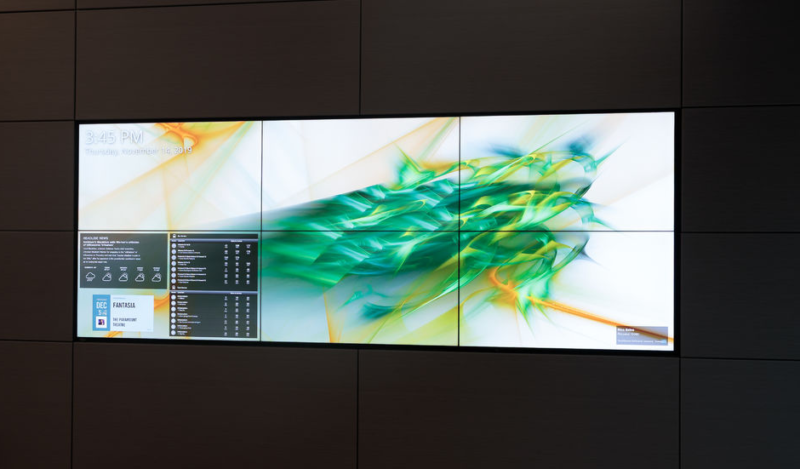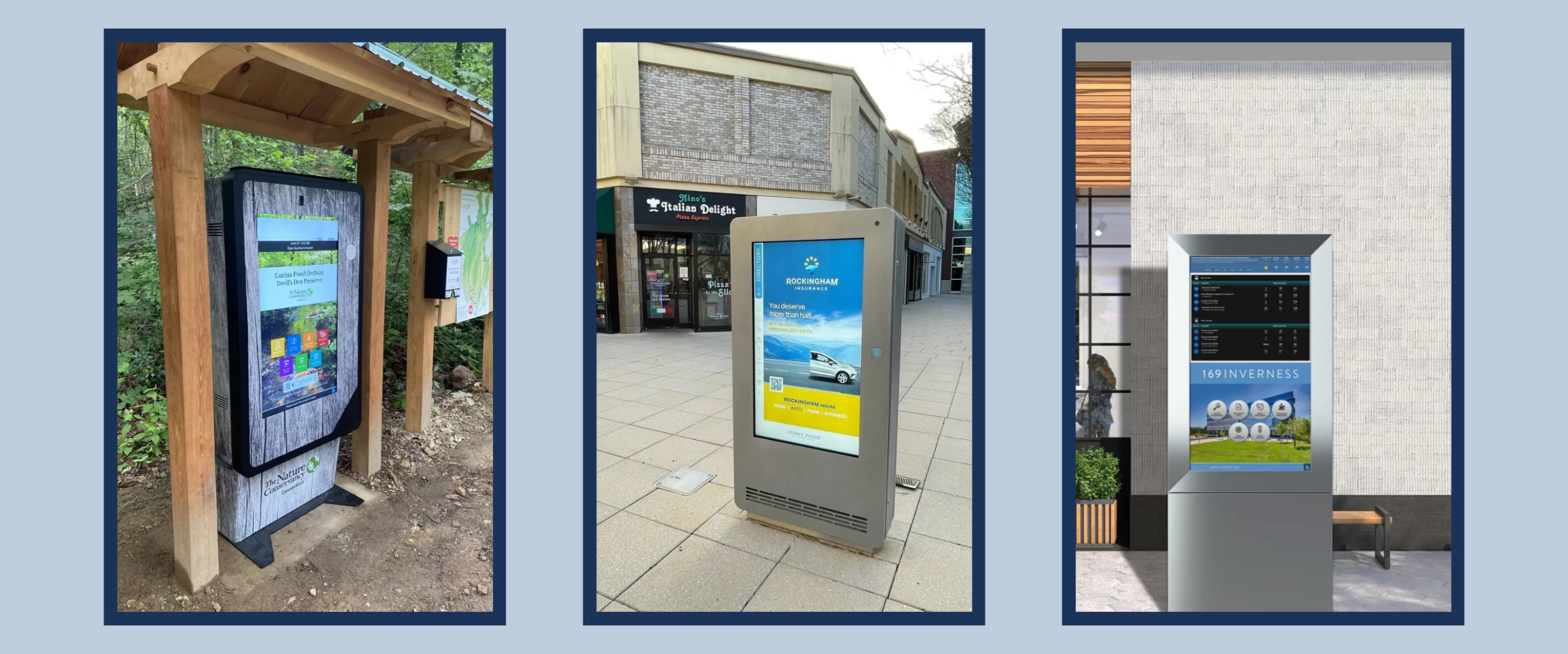Can You Use Consumer TVs for Commercial Digital Signage?
Here’s why you should think twice before using consumer TVs for your commercial digital signage needs
As digital experiences become more common in commercial spaces, the question gets asked if consumer TVs can be used instead of commercial digital signage.
While it may seem like a cost-saving option, there are significant differences between the two that make consumer TVs less than ideal as a long-term solution. In this blog, we will explore the key differences between consumer televisions and commercial digital displays.
Table of Contents
- Why brightness and display versatility matter
- Elements of good design and function for your space
- Is display tampering a concern on your property?
- Wrapping it up
Why brightness and display versatility matter
One of the main differences between consumer TVs and commercial digital signage is brightness.
Commercial displays have screens that are up to 10 times brighter than those of regular televisions. Additionally, they have anti-glare technology for optimal viewing. This is important because digital display signage is often viewed in bright environments, such as outdoors in direct sunlight or indoors in spaces with bright fluorescent lighting. Dim signage won’t be helpful to guests who need to find their way around within your space. Bright, vivid displays are visually appealing, easier to see and use, and better suited for your commercial real estate space.
Brightness is measured in Nits. A higher Nit value means the display will be brighter. Learn more about how bright your digital display should be in this blog post.

Video wall differences in brightness measured by NITS
Elements of design and function for your space
Another key difference is in design and function. Consumer televisions have thick plastic frames and attached logos that display a brand that’s not your own. This prevents you from delivering a smooth, sleek aesthetic for your property.
Additionally, they are not designed for frequent movement, while commercial digital signage displays are manufactured to be sturdier and last longer. They often include fingerprint-resistant screens, thinner frames, and removable logos and branding.
Let’s say you want to build a stunning digital art wall with professional digital signage. The sturdy, thin borders (bezels) and lack of branding on commercial digital displays seamlessly connect to create a showpiece video wall. Learn more about what to look for in a video wall in this blog post about LED and LCD video walls.

Is display tampering a concern on your property?
Finally, consider what would happen if a passerby was able to modify your digital signage settings.
Consumer televisions have accessible controls that can be easily tampered with, while commercial digital displays have controls that are far out of reach. This way, no one walking by could crank up the volume or hit the power button.
Some commercial display models even allow certain controls to be disabled. This is important in high-traffic environments where the digital signage software is controlled off site, as it prevents accidental or deliberate changes to the display.
Wrapping it up
In conclusion, while it may seem like a cost-saving option to use consumer TVs for commercial digital signage, there are significant differences between the two. And they are the kind of differences make consumer TVs less than ideal for the duration of your signage solution. Not to mention, the technical capabilities of consumer TVs can be very limited.
Commercial digital displays offer better brightness and display versatility, design and function, and controls and inputs. By choosing high-quality digital monitors specifically designed for commercial usage, you’ll ensure your property has bright, beautiful, versatile displays for years to come.
Contact Us Today
Contact TouchSource to learn more about selecting the right commercial digital signage for your space.













